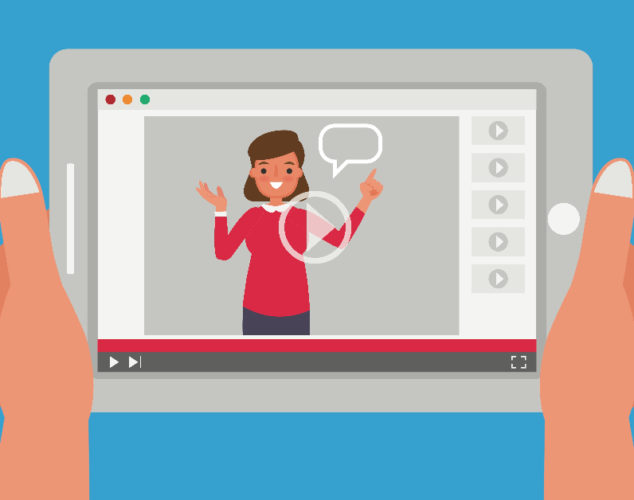Marijuana, while legal in Colorado since 2014 and on its way to normalization in our society, remains a controversial subject, especially with its illegal federal status. When launching communications of any kind about marijuana—even those that are educational—it’s imperative to approach with thorough planning and a deep understanding of the landscape.
Even better, consult and work with those who have been there, done that!
As more states are embarking on legalization, we’re here to share some learnings we’ve collected over the years through our work with the Colorado Department of Transportation, the Colorado Department of Public Health & Environment, and the City and County of Denver.
- Find partners who are willing and able to talk about marijuana, and cultivate those relationships.
This includes both media vendors and community partners. We’ve found that, especially with companies not based in Colorado, larger vendors are still spooked by marijuana messaging, even that of prevention and education. Further, targeting youth is always difficult because there are more restrictions when messaging to minors. Over the past few years, we’ve been able to develop a network of trusted partners who champion and run our ads.
Early on in one campaign, we tried to go too big, too fast with one of our community partners. We had an execution planned with a local school that ended up being shut down at the last minute due to community complaints. It wasn’t that the school didn’t agree with our message, it was that they couldn’t handle the backlash of being so public about something. This was a great learning for us, and we ended up finding a different route to reach youth in schools through more internal messaging via substance use school counselors, card games, posters and more.
- Language matters in your communications.
Even after you find those trusted media vendors and partners, it’s not all smooth sailing. A big part of our work depends on our team being up to date with what language and imagery platforms (particularly social networks) allow. Some even approve or disapprove ads based on their destination URLs. Over time, our team has become experts on language that resonates with our audiences, and/or how to work around required language, while also passing through these platform checks.
- Know your audience.
As with any type of communications campaign, it’s imperative to understand your audience to their core—what are their attitudes about something, do they use it, are they aware of it? We rely heavily on research to guide the development of our campaigns and targeting strategies.
In one such case, with a youth-targeted campaign (a notoriously difficult audience to reach), we did extensive research and found that, instead of a prevention-focused campaign, an education-based effort would be more effective to give youth the facts and freedom they needed to make their own responsible decision not to use. And, it worked—of teens who had seen our High Costs campaign, 81% of them were discouraged from using.
- Terminology matters.
We’ve mastered the art of choosing our words wisely. When speaking to the general public, using the term marijuana is a safe bet. However, when speaking with industry experts call it cannabis because it’s the more respected and professional name for marijuana. Generally speaking, there is a movement to shift the term marijuana to cannabis to reduce the stigma associated with consuming marijuana. Think of it this way: cannabis is the rebranded version of marijuana.
For a youth campaign, we wanted to be sure we were using the terms that would best resonate with our audience. There are dozens of names for marijuana, so it was important that we utilize the term (or terms) that our audience recognized. Through our discussions with youth in focus groups, we found that their top two terms of use were “weed” (by far), followed by “marijuana.” The use of “pot” brought us some blank stares, so we knew to avoid it.
- Get in-depth to best reach and understand tough audiences.
In an effort to reach the ever difficult youth audience we had to think outside of the box. Ultimately, we determined that in order to reach the youth audience we needed to speak to the adults the youths trust. We created a “trusted adult” audience, composed of community mentors, coaches and teachers to effectively reach the youth audience and empowered them to have tough conversations with youth about underage marijuana use.
Additionally, we were challenged to target the niche audience of those pregnant and/or breastfeeding. There is limited research available on how marijuana affects an in utero fetus. However, we do know from research that THC from marijuana is stored in the breast tissue, therefore if someone consumes marijuana while pregnant and/or breastfeeding, they will pass the THC to their baby.
To further expand our knowledge of the pregnant and/or breastfeeding audience we partnered with local initiatives to get a better understanding of why this audience might be interested in consuming marijuana. Our research showed that women receive conflicting guidance from their doctors to consume or not consume based on the limited information we have on how it affects an in utero baby or a child breastfeeding. Having this insight, we worked to message to this audience in a way that put the responsibility and ownness on these women to make the best decision for their health and the health of their baby. Our communication strategy included thought provoking messages urging the audience to think twice about what they would prefer to pass on to their baby: THC from marijuana or their personality and unique passions.
- Communications should overcome stigma.
Legal recreational marijuana consumption is still relatively new and perceptions regarding its usage are still seen as taboo to many Americans. Our team has worked with several clients to break down the stigmatizing barriers associated with legal consumption.
We partnered with budtenders (like bartenders but for marijuana) to get a better understanding of what their customers expect when they go into a dispensary. Many consumers expect a dispensary to be laid-back and rule-less, if you will. In actuality, dispensaries are highly regulated and their budtenders are knowledgeable about their products, marijuana strains, policies and tips related to safe and enjoyable consumption.
To reduce stigma, our team worked hard to balance educating the general public without shaming them for improper use or knowledge. For example, through our client relationship with the Colorado Department of Transportation we partnered with Lyft on 4/20 with wrapped cars and discount codes to encourage consumers not to drive high. We were able to effectively message to our audience that driving high was illegal, while offering them a creative and safe solution.
- Navigating rules and regulations is paramount.
There are various rules and regulations that go along with marijuana marketing, and making engaging content while sticking to a strict script can sometimes be tough. Determining the problem is always key when creating content about rules and regulations—you never want to assume that people are doing the wrong thing, so you need to find a message tone that is informative yet approachable. A few key problems we’ve leaned into over the years are: traveling with marijuana – it’s illegal!, and smoking or consuming in public or on federal land is a no-no.
We also took learnings from social engagement that our audiences did not take kindly to being reminded about the laws. Turns out, if you are going to engage, most are aware of the laws – they may not like all of them, but are aware. So instead, we can sneak a law message (eg. don’t drive high) within a bigger message if we have to: “Start low and go slow. Edibles can take up to 4 hours to kick in. Wait it out at home.”
While rules and regulations aren’t always fun or well received by people, they are an integral part of keeping recreational marijauna legal, and keeping consumers safe and knowledgeable.
- It’s a curated mix of emotional and factual appeals.
Something we’ve encountered in our work is that many users are skeptical about the laws and the legal ramifications. This was especially true in our work on the prevention of driving high, in particular, and is primarily due to the belief that some individuals actually believe they drive better while high.
With this, we had to provide credible, specific information that proved the impacts of driving high in a way that would resonate with these individuals and drive behavior change. Many people who don’t use are uncomfortable with the idea of driving high, but most users are not. With our campaign we capitalized on this learning and built our effort on the idea of “leading with feelings and following with facts” by evoking emotions with our creative and then providing concrete data to back it up.
- It may be a tough subject, but you can still make education and prevention engaging and fun.
With one of our youth campaigns, we knew we were fighting an uphill battle. Youth are constantly being bombarded with messages, and our society is still feeling the effects from the scare tactic era of “Just Say No.”
So, we had to explore how to engage youth long enough for them to hear and absorb our message. Enter Weeded Out, a game show for youth centered around marijuana education. Admittedly one of our crazier executions as an agency, it ended up a success, and was an absolute blast to film while youth showed their knowledge about marijuana facts and effects to fight for the title of “Heavyweight Champion of Weeded Out Wisdom.”
- Responsibility in communications.
As we’ve said, even though marijuana has become normalized in Colorado, it’s still controversial, it’s illegal federally and in neighboring states, and we largely don’t know all that much about the effects of marijuana long-term due to lack of long term research.
Colorado was the first state to legalize, so we have a leg up in how to message about it, how messaging is received, and what messages are really needed. We’ve seen how our state has reacted to legalization and its implementation. With all this in mind, it’s essential to be responsible in communications about it, and keep working to ensure that people have the information they need to use (or not use) responsibly.
While these are just ten curated tips for effective marijuana marketing, we continue to uncover best practices to ensure that we, Amélie, our clients, and our audiences are learning and evolving with this ever-changing landscape. Let us help you too!
Co-Authored by Katelyn Aberle, Account Supervisor and Sara Nigro, Senior Account Manager


